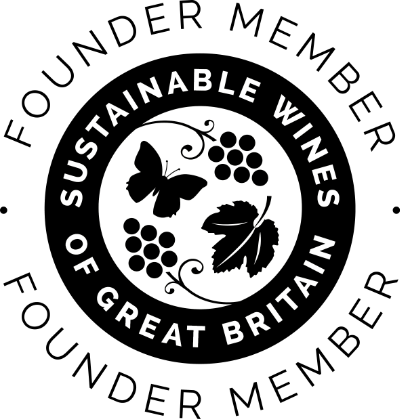Merlin Sheldrake, author of the best-selling Entangled Life, reveals the mysterious role fungi plays in the vineyard – and how it might just shape the future of wine. Image credit: Hanna-Katrina Jedros, with kind permission of Vintage.
In 2023, Jon Pollard, Gusbourne’s hugely experienced Vineyard Manager, decided to call time on under-vine cultivation. Chopping up the soil to prevent weed growth, was – he felt – limiting the vigour of the vines and damaging the abundant soil life.
This move isn’t without controversy, but Merlin Sheldrake – biologist, author and expert in fungi – thinks it makes perfect sense.
Here, we speak with Merlin about why fungi, especially those in the soil, are the forgotten heroes of food and farming. In Merlin’s view, the secret to making – and selling – wine in a sustainable way might just lie in this forgotten kingdom.
Why should wine lovers care about fungi?
At the most fundamental level, your glass of wine is only possible because of fungi.
Go on…
All land plants have fungi to thank for their existence. It was only with the help of fungi that, about 500 million years ago, the ancestors of land plants were able to move from freshwater and onto the land.
These fungi supplied plants with crucial nutrients; helped them resist drought and helped them forage for what they needed in the complex labyrinths of the soil. All plants depend on this long association with mycorrhizal fungi – and vines are no exception.
So, fungi made vines possible. Anything else?
Then there’s soils. Soils are the outcome of fungal activity. Decomposing fungi transform organic matter from one state to another – and in doing so, fungi release nutrients and provide soil structure; fungi provide highways for bacteria to navigate the soil as well.
And above ground?
There’s the yeast of course. We need yeast to turn fruit sugars into alcohol. And the fungi that live on and in the plants to help with its natural defences.
That’s the big picture. But what’s going on in a bit more detail?
Let’s narrow in on one vine. At any moment in time, it’ll be working with its mycorrhizal fungal communities. These fungi grow in and around the roots to supply the vine with crucial nutrients and help them to interact with the soil.
The ancient pact between plants and mycorrhizal fungi is that plants supply the fungi with carbon. (Carbon are energy containing compounds, like sugars and fats. Plants are making those compounds in photosynthesis where they are eating carbon dioxide and light and transforming these into energy-containing carbon compounds.) So, plants push these energy-containing carbon compounds through their roots. They trade carbon with the fungi, getting phosphorus, nitrogen and mineral nutrients in return. Fungi are ingenious soil scavengers – far better able than plant roots to tease out nutrients. So, that’s the essential deal. That’s the core of the relationship.
Right. So ploughing soil and chopping up these fungi networks. That sounds like a no-no.
Much of modern agriculture has evolved without considering the life in the soil – whether that’s mechanisation or huge inputs of chemical fertilisers, herbicides, pesticides and so on. The soil was thought of as a kind of place where nutrients hung out, but not as a place filled with life that was vital for plants to thrive. Ploughing breaks up fungal networks. Every time you plough, the soil has to reset. We have good reason to believe that reducing disturbance to the soil will have a beneficial effect on the plants and their fungal associates.
Could fungi impact the flavour of a wine?
Potentially, yes. The fungi are stationed at the key entry point of nutrients and soil chemistry into the vine. It’s only through fungal activity that plants are able to acquire certain compounds from the soil. So, in principle, fungi will be vital to any expression of soil chemistry and soil characteristics in the plant. They'll be mediating that interaction between the plant and the soil.
So, fungi feed the vines, potentially influence the flavour of fruit and make fermentation possible. Where else can they help?
Packaging would be a really good area to think about. You can grow fungi with different appetites: with some R&D it would be possible to find a way to use the skins and stalks – the leftover materials from winemaking – as a feed for them. Then, in turn, you can use the fungal material produced from this for packaging, like wine box inserts which hold wine bottles in place. That’s totally possible. There’s lots of potential here we should be exploring.
For a more in-depth, and wide-ranging, exploration of the fascinating kingdom of fungi, Merlin’s book Entangled Life (Vintage) is out now. His film, Web of Life, is in IMAX cinemas now.








